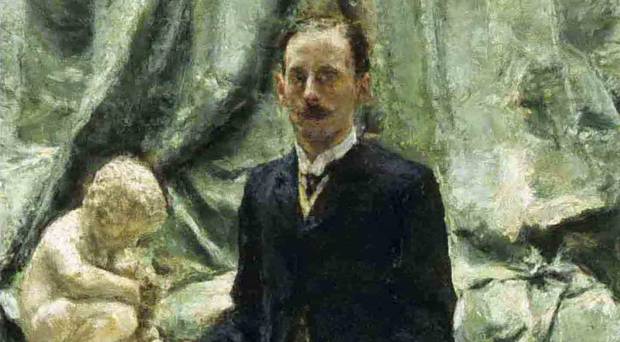Citizen Lane (G)
Such was the esteem in which art dealer Hugh Lane was held, if he even looked at a painting in a gallery, its value escalated. He lived in a period of literary rather than artistic ferment in Ireland. There were more people like W.B. Yeats than his brother Jack. “I’m going to revive the tradition of painting in this country,” he promised. Informed that there wasn’t one, he huffed, “well I’m going to revive it anyway.”
Thaddeus O’Sullivan directs this fascinating biopic about Lane. It’s as much drama as documentary – and as much a dramatisation as either. The ‘mixed grill’ format jars betimes but this is a minor complaint in a quality-studded film.
It doesn’t go into too much detail about how he got the money to buy what even then had to be astronomically priced paintings. He didn’t feel the Irish appreciated them enough but he had to accept the fact that issues like homelessness and poverty – both were rife at the time – had to be prioritised.
This is a point made by the MP William Martin Murphy when Lane goes to him looking for funding for an art gallery. He wants it to be built, wait for it, on the Ha’penny Bridge. (This isn’t a misprint. Not beside it. On it.)
Different hue
You can imagine how people like Padraic Pearse would have felt about such a luxury. This wasn’t too long before the 1916 Rising. As Bertolt Brecht might have said: “First grub, then art.”
Murphy was an avid nationalist. Lane had an Anglo-Irish heritage. When Lane tells Martin he’s a nationalist too, Martin snorts, “yes, of a different hue”. The pun on his surname goes unnoticed.
The dialectic between aesthetes like Lane and hardscrabble pragmatists like Murphy underpin the action.
Yeats’ “greasy till” or Lane’s “divine beauty”? Monet or money? Take your pick.
The question of who owns Lane’s incredible art collection today is a vexed one. Before he died – he drowned on the Lusitania in 1915 – he willed them to Britain. Afterwards, he had a change of heart and added a codicil. It said he would be happy for them to be housed in Ireland – if a proper building could be found. (By now he’d dispensed with the bridge idea.)
Unfortunately, the codicil wasn’t witnessed so it meant nothing legally. An ad hoc arrangement pertains today. The paintings are in a metaphorical limbo on the Irish Sea, being loaned periodically by London’s National Gallery (which legally owns them) to us. They grudgingly allow us a ‘moral’ right to them.
Tom Vaughn-Lawlor (Nidge from Love/Hate) depicts Lane with an amiable archness. He gets the cut glass accent perfectly.
Cameos are provided by Bosco Hogan (he plays Lane’s distant father) and a number of others, like the brilliant Michael Gambon.
The historian Roy Foster says Lane was either a genius or “a used car salesman in a better suit”. I prefer genius.


 Aubrey Malone
Aubrey Malone A painting of Hugh Lane.
A painting of Hugh Lane. 